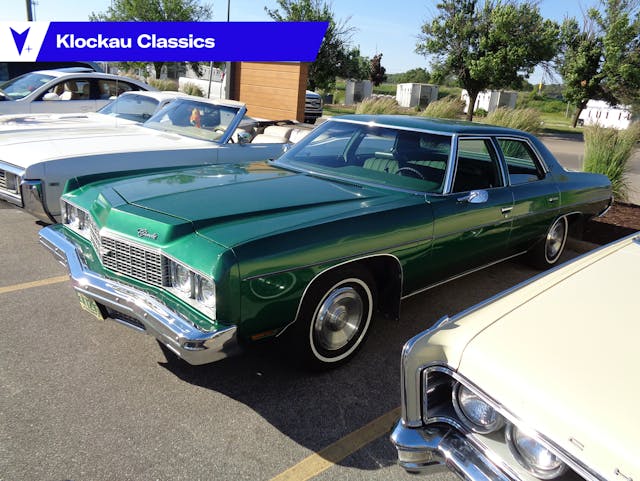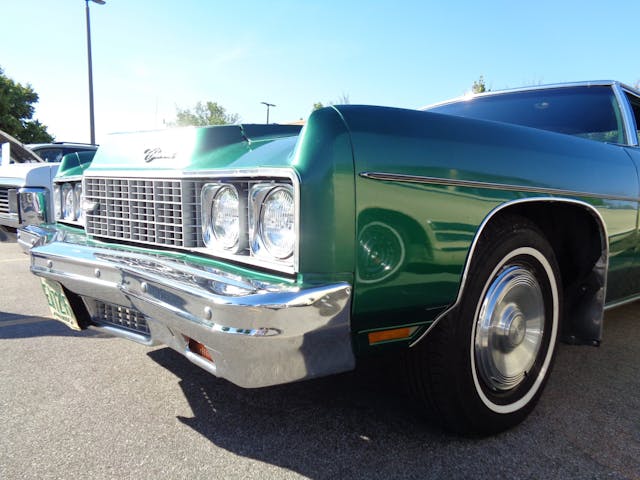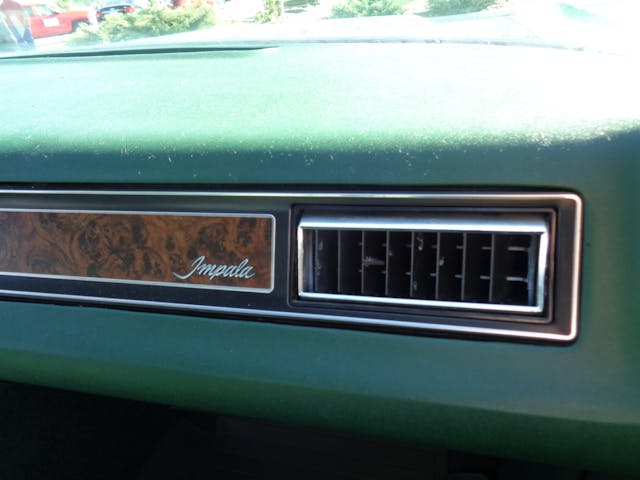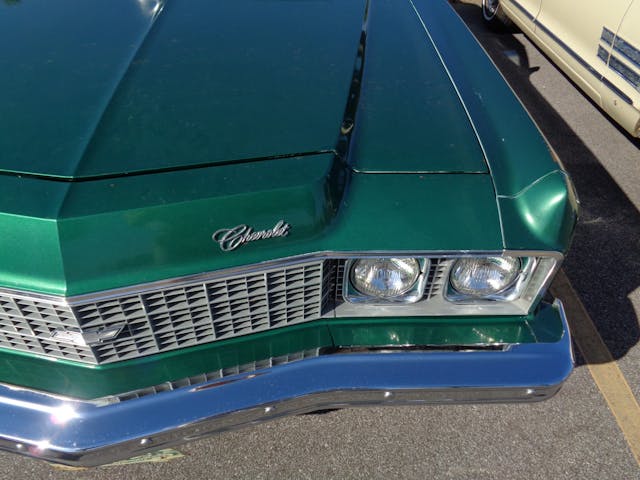1973 Chevrolet Impala: Family Yacht

Think fast: What’s the most common family car today? If you guessed some variety of domestic full-sized pickup or imported crossover, you’d be right. Among the more popular family cars these days are the Forester, Silverado, and Explorer. As it has for many years, the top dog, sales-wise, is the Ford F-150.

But once upon a time in the 1970s, the sales kings were large and domestic and very untrucklike. The personal luxury car was king, but there was still high interest in full-sized coupes, sedans, and station wagons from the Low-Priced Three: Ford, Plymouth, and Chevrolet.

In the 1973 model year, Chevrolet Motor Division sold 2,365,381 units. Of those myriad Vegas, Malibus, Novas, C10 pickups, and Corvettes, 941,104 were full-sized Chevrolets. That’s a lot of land yachts.

Sure, the midsize Colonnade Chevys—especially the personal-lux Monte Carlo, all new for ’73—were selling well, as were the other Chevy lines, but the big cars still held their own. And many driveways held some variety of Caprice, Impala, or Bel Air. Caprice, of course, was top dog, and the Bel Air was typically taxi/police fodder, but the Impala, as it had been for years, was just right for many.

The Impala had been a favorite for years. Perfect for the nuclear families of the ’50s and beyond, Impalas were modestly priced and had plenty of room for six, plus a gigantic trunk. Perfect for those Clark Griswold-esque family vacations from a time when flying was considered a luxury. No, really. Times have certainly changed.

The ’73 Impala was more or less the same car as it was when the all-new big Chevrolets appeared for 1971. The expected trim, grille, and upholstery shuffles were in evidence, of course; Detroit was still in the annual facelift era. Impalas came in six models: Custom Coupe (with a formal roofline), Sport Coupe (with a ‘faster’ roofline), Sport Sedan, pillared sedan, and six- and nine-passenger station wagons.

The most prominent change was the new federally-mandated 5-mph front bumper, giving big Chevys (and most other domestic ’73s) a massive look up front.

And you had choices back then. Color, for instance. People were less timid and could choose many different exterior and interior colors. Such as the gorgeous green with green interior and the “slick top” (that means no vinyl roof, to those of you not immersed in Broughamdom) on today’s featured car. Or perhaps silver with bright red interior and black vinyl roof? Or a convertible in bright red with white interior and black top? Triple navy blue? Gold with brown top and interior? No problem.

Factory color choices included Tuxedo Black, Light Green Metallic, Midnight Blue Metallic, Taupe Metallic, Antique White, Chamois, and Dark Red Metallic. Available engines included a 250 six, 350 V-8, 400 V-8, or the brawny and optional 454 V-8. Impalas like this one came standard with the two-barrel 350 and Turbo Hydramatic automatic transmission.

Also standard were power brakes (front disc/rear drum) and variable ratio power steering. A three-speed manual was also available, but only with the six, which itself was only available on Bel Airs. Caprices and Impalas got triple taillight clusters; Bel Airs only had two per side.

These were big cars. An Impala four door had a 121.5-inch wheelbase, a width of 79.5 inches, and an overall length of 221.9 inches. For comparison’s sake, a 2022 Cadillac Escalade is 211.9 inches long, with the stretched Escalade ESV being 227 inches. In keeping with their size, Impalas had a 26-gallon fuel tank. The four-door pillared sedan (the Sport Sedan was Chevrolet’s term for four-door hardtop) weighed in at 4138 pounds. Base price was $3752 ($24,431 today).

This gorgeous example was spotted back in June 2017 at one of the Quad Cities Cruisers’ monthly cruise nights at South Park Mall in Moline, Illinois. I usually attend them all, and while sometimes you see the same cars over and over, other times you’ll spot something really cool and interesting, then never see it again. This was one of those cases; I haven’t seen this car since. Fortunately, I took a ton of photos.

It was sold new at Bob Eriksen Chevy Center, which still exists as Eriksen Chevrolet-Buick and is an approximately eight-minute drive from where this Impala was sitting. A real time capsule for sure—right down to its ’73 Illinois license plates.


